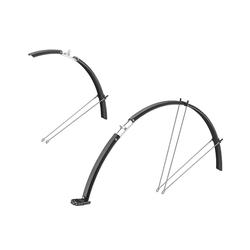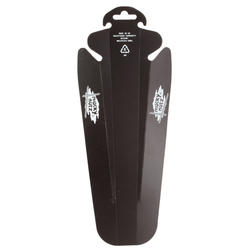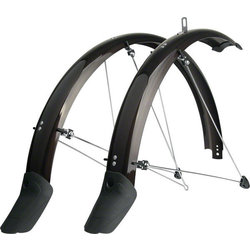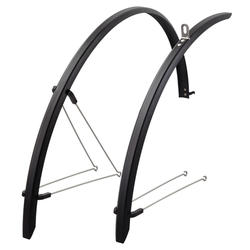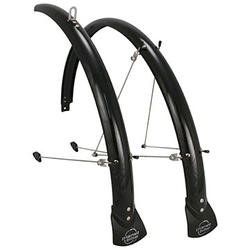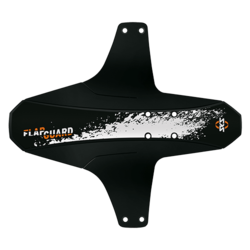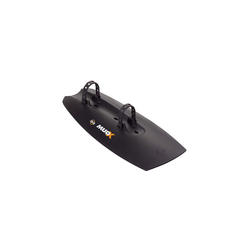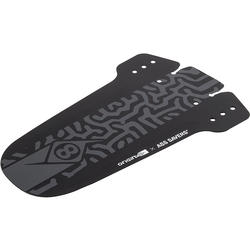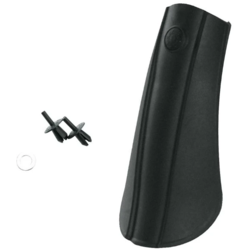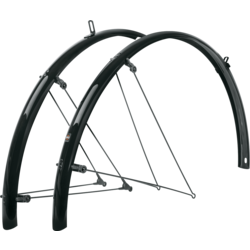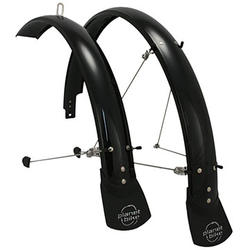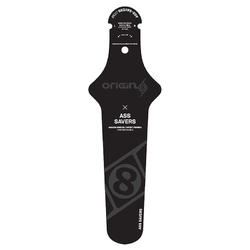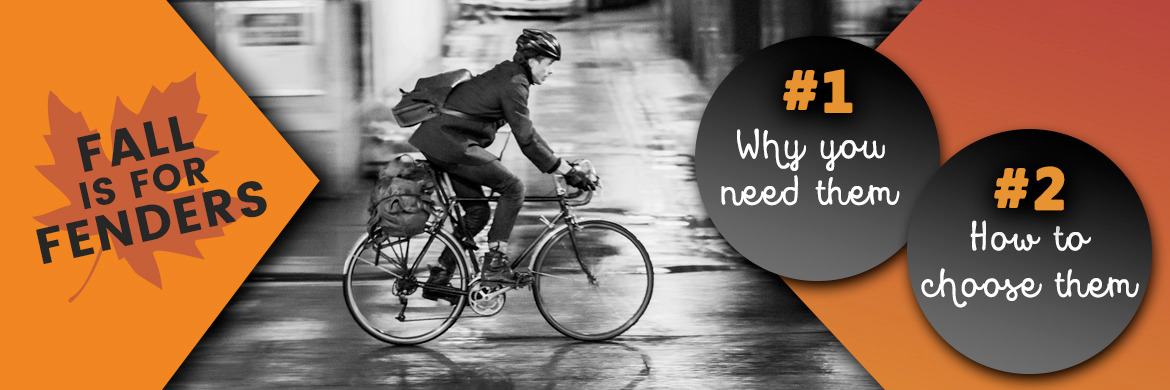
Guide to Bike Fenders
We've all experienced it - the elements attacking us from above or below (or likely both). There are few things more miserable than riding on a cold, wet day and ending up cold and wet yourself. However, inclement weather becomes much more tolerable with the right set of fenders. Bike fenders are great for protecting both you and your bicycle, as well as others in close proximity to you.
Why Bike Fenders are Useful
First and foremost, everyone will appreciate the fact that their face and back stays cleaner and drier while fenders are in use. However, fenders also reduce the amount of dirt and grime that sprays onto your bike's moving components. Less grit on your components means a longer life span for those components. And a longer life span for your components means you get to spend your money on more fun things to buy. Lastly, road spray can impact not only your cleanliness but also your vision. It is safer for both you, and those riding around you, to reduce the amount of spray your bike is kicking up.
Choosing the right fender
The amount of different fenders on the market can be confusing. In addition, fenders are not one size fits all. A fender will differ depending on your bike type, your tire size, and your riding style. However, there are two primary types of fenders that you will see on the market.
Bolt-on fenders
Bolt-on fenders are just what their name suggests. They are fenders that bolt onto the frame of your bike. This type of fender is typically found on touring, commuter, cruisers, cyclocross, endurance road bikes and some lower-end mountain bikes. Since the fender is screwed onto the bike, they are a more permanent option. If you will be wanting to remove the fender frequently or switch it between bikes, you do not want to go with a bolt-on fender. However, this type of fender often fits the bike very securely and is usually longer as well providing more coverage.
Clip-on fenders
If your bike doesn't have the pre-drilled mounting options for bolt-on fenders then you will want to shop for clip-on fenders. Clip-on fenders typically attach to the front fork, seatpost, downtube or rear seatstay via zip ties or simple and removable rubber, plastic or velcro mounts. Consequently, installation is usually relatively simple and does not require tools. Clip-on fenders are a wise choice if you're planning to remove fenders in dry weather.
Mountain bike fenders
Mountain bike fenders are usually more robust in construction to deal with the harsh terrain that riders cover when out riding. In addition to mud, a mountain bike fender must deflect rocks, sticks and everything else that comes with riding off road. A good fender will both keep you dry and keep debris out of your eyes. A small front fender combined with a seatpost mounted rear fender can provide excellent protection on the trail.
Road bike fenders
On road bikes, snap-on seat fenders are growing in popularity, especially due to the ease of installing. This minimalist option will protect you from the worst of dirt and water. However, if you want fuller protection you will want to investigate a full length clip-on fender.

